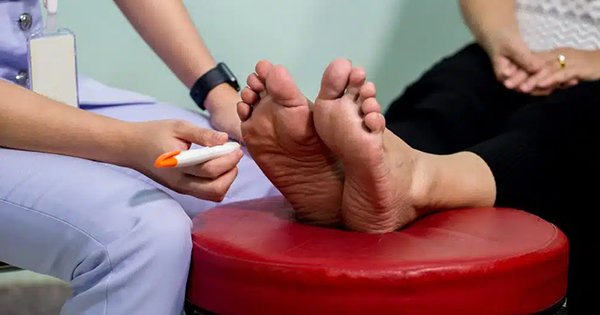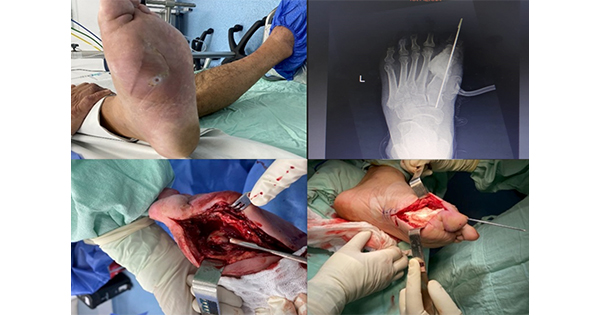Wound infection is one of the most challenging aspects of wound management and a major contributor to healthcare costs globally (Harding and Renyi, 2009). Some of the challenges associated with the management of wound infection stem from there being no agreed definition of what constitutes an infected wound in the clinical context, nor consensus on describing bacterial behaviour such as contamination, colonisation and critical colonisation (Cutting and White, 2005).
By nature, wounds readily acquire a variety of microbes, yet the majority are not infected (Vowden and Cooper, 2006). Thus, pathogenic and non-pathogenic microbes can usually be detected in wounds that progress normally to healing. Yet once infection has taken place, it can delay healing (Price and Harding, 1996), amplify pain intensity (Price et al, 2008) and be, in many cases, a particularly distressing experience for the patient and those closest to them (Ribu and Wahl, 2004; Mudge, 2007; Gilpin and Lagan, 2008).
Complications arising from diabetes increase the risk of wounding and of wounds becoming chronic – most especially on the foot. As an extension, people with diabetes experience a far higher risk of hospitalisation for soft tissue and bone infections of the foot than individuals without diabetes (Lioupis, 2005). Infected diabetic foot wounds precede around two-thirds
of lower-limb amputations, thus being a major predictor of amputation (Lavery et al, 2006).
The treatment of infection in the diabetic foot can be difficult. As is well known, the injudicious use of antibiotics has led to an emergence of drug-resistant microbial strains (Moffatt, 2006). Antibiotic resistance is further compounded in the person with diabetes by
(i) vascular insufficiency – where impaired microvascular circulation limits the access of phagocytic cells to the site of infection, reduces the impact of systemically administered antibiotics and results in poor tissue oxygenation – and (ii) neuropathy, which can mask characteristic signs and symptoms of infection (Veves et al, 2002; Edmonds and Foster, 2005).
Microbiology of Wounds, edited by Steven Percival and Keith Cutting (2010), is a comprehensive reference book divided into 13 chapters, each penned by authors who are specialists in their respective fields. Although no chapter specifically addresses diabetic foot ulceration, the content of Microbiology of Wounds is widely relevant to clinicians involved in the care of diabetes-related wounds.
Chapters 2 and 5 present detailed overviews of the anatomy and physiology of human skin. Information is given on the current understanding of the intricate interactions between cells, growth factors, cytokines and enzymes in the process of “normal” wound healing and how an imbalance in these relationships can lead to chronicity. The authors consider common infecting microbes and give perspectives on the positive and protective role that micro-organisms play in human skin. Current research into the cellular events that characterise the non-healing state is described and related to the development of treatment paradigms (such as wound-bed preparation) and the identification of potential targeted therapeutic interventions (such as growth factor gels, engineered skin and protease-modulating dressings).
The importance of addressing biofilms in wounds is increasingly being recognised, with evidence suggesting that biofilm-involved microbes are between 10- and 100-times more antibiotic resistant than planktonic forms (Rodgers and Watret, 2008). Chapters 1 and 8 present excellent explanations of biofilms, the involved micro-organisms, their role in infection and their significance in wound healing.
An understanding of biofilms is relevant reading for anyone managing diabetic foot ulcers. In particular, bone infections provide favourable conditions for biofilm development and are thus common in cases of osteomyelitis. The various properties and effects of antibiotics commonly used in the treatment of infection in diabetic foot ulceration are considered in relation to biofilms in Microbiology of Wounds. Also included are comprehensive descriptions of the antibacterial properties of modern wound dressings.
An interesting reflection on the evidence supporting qualitative microbiology is given in chapter 6. The “critical” bacterial load of 105 colony forming units/g – traditionally thought to be indicative of infection – is described as being arbitrary and of little clinical significance. The authors argue that qualitative microbiology alone cannot distinguish between microbial colonisation and infection. What is of greater relevance to healing and infection control, it is suggested, is wound type and the individual characteristics of the patient. The reader is directed to more recent evidence that suggests microbial products (toxins, enzymes), rather than bacteria per se, play a stronger role in infection and non-healing than once thought.
In recent years much research attention has been paid to the significance of molecular-level cellular interactions, such as the roles of the many matrix metalloproteinases (MMPs; Blakytny and Jude, 2006). Chapter 9 explores the current evidence on MMP activity, while chapter 10 reviews immunological reaction to microbial invasion. Both chapters highlight the need for new diagnostic tools that are capable of revealing fundamental wound parameters at the cellular level – wound diagnostics being another area currently attracting much research attention. Microbiology of Wounds is unique in its coverage of this subject and should encourage clinicians to question the grounds on which they make wound management choices.
Helpfully, each chapter is accompanied by an extensive list of supporting references that provide readers with an up-to-date reading list should they wish to investigate a topic in greater detail. Microbiology of Wounds is a valuable reference book for any healthcare professional working in wound care.
Title Microbiology of Wounds
Editors Steven Percival and Keith Cutting
Publisher CRC Press
Date 2010
ISBN 978-1-4200-7993-7





